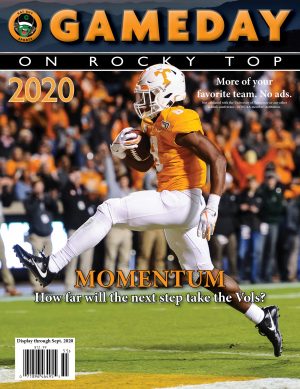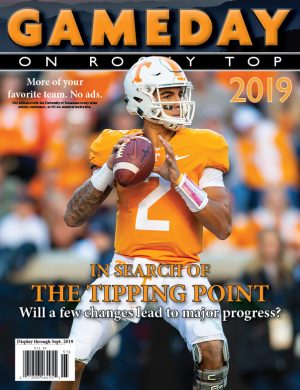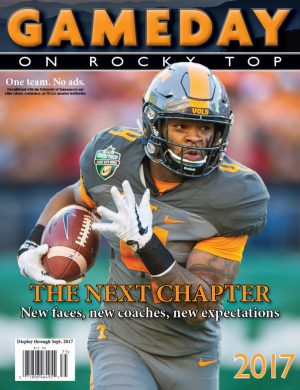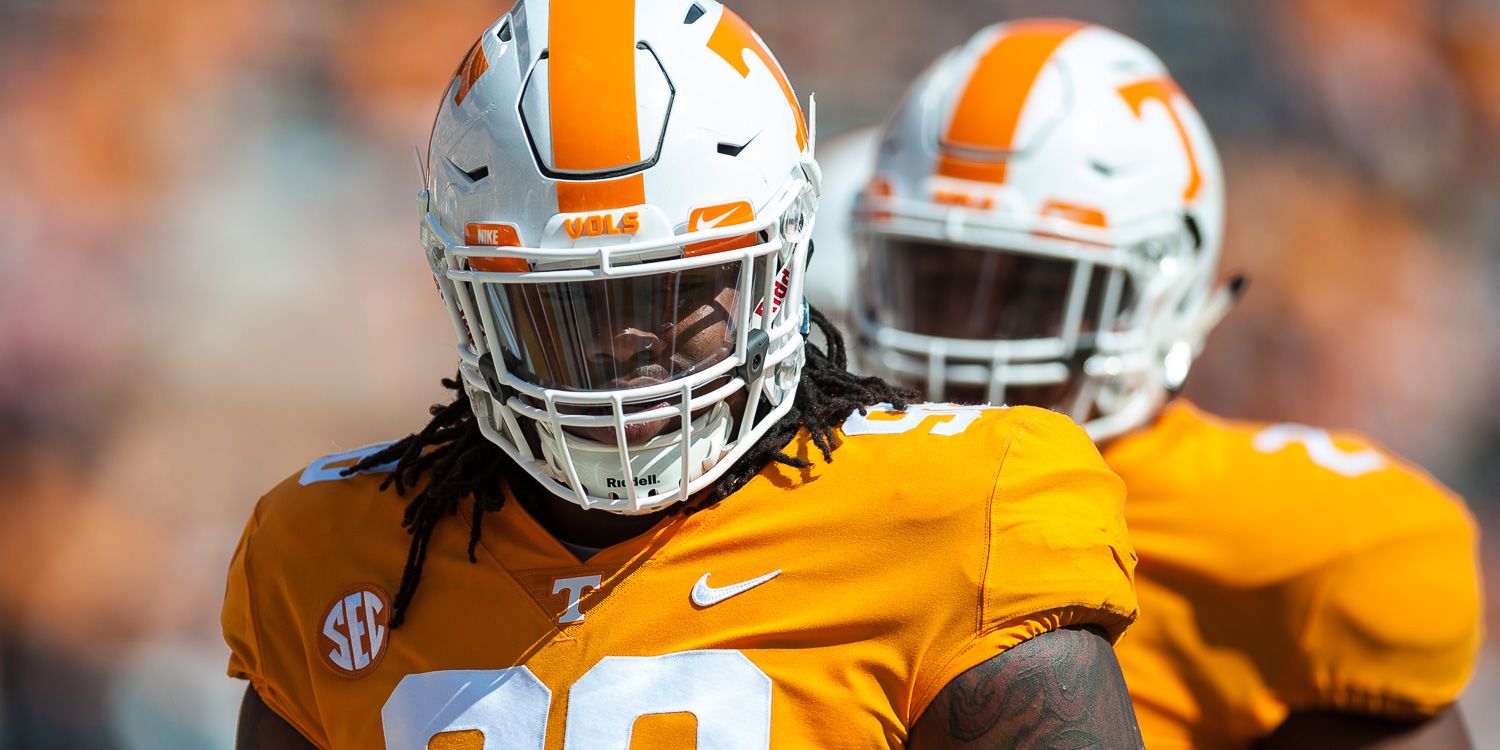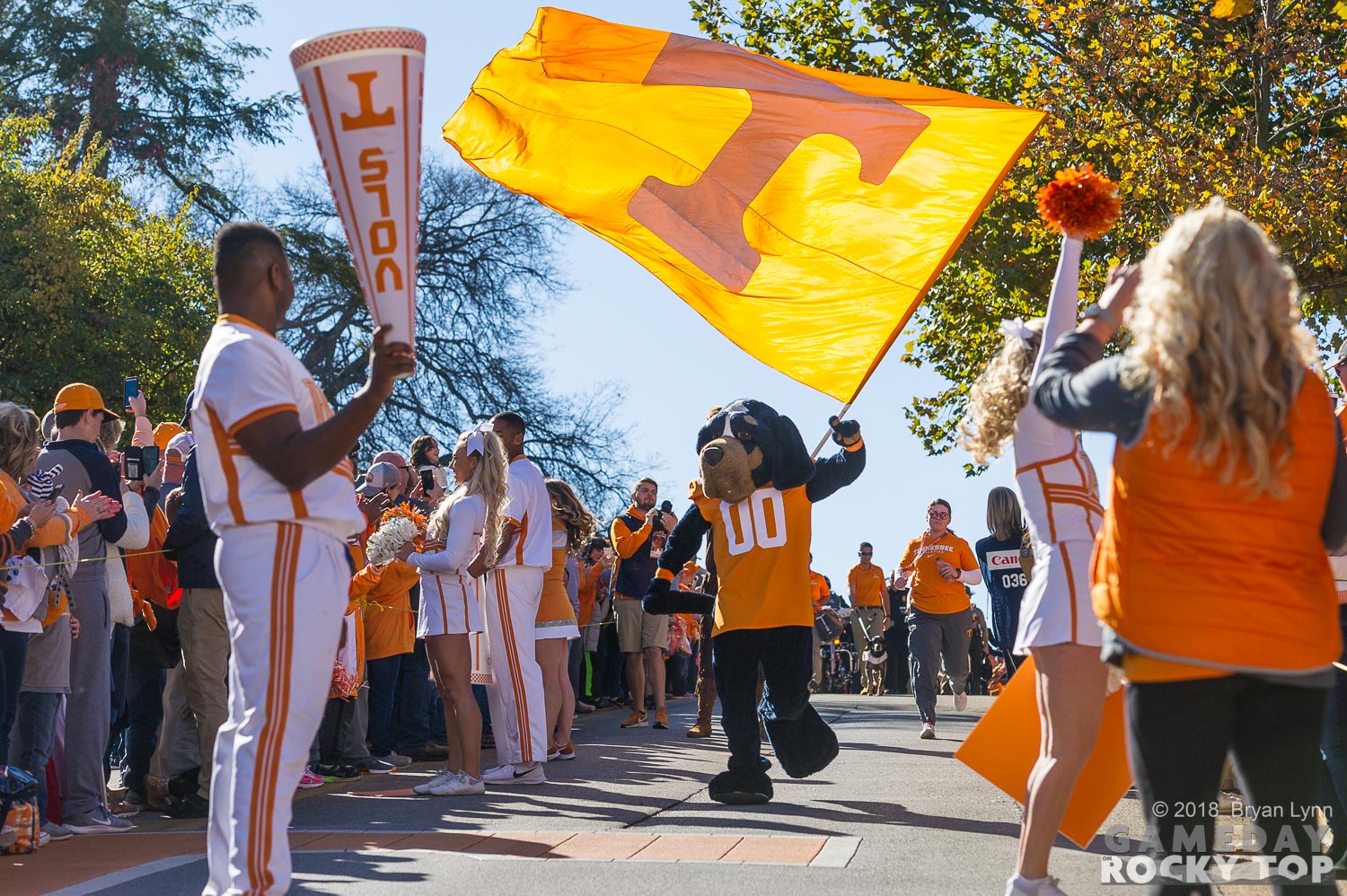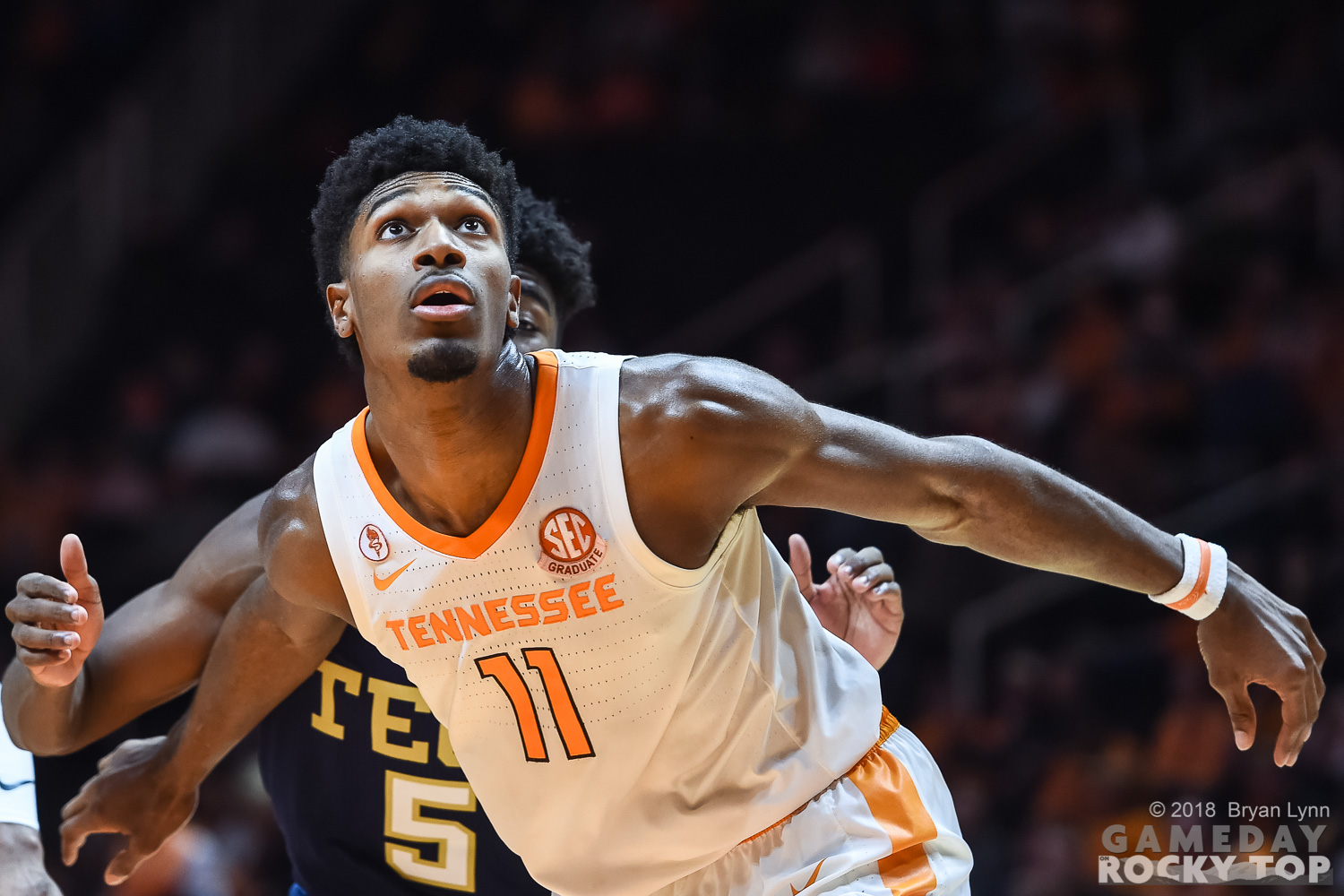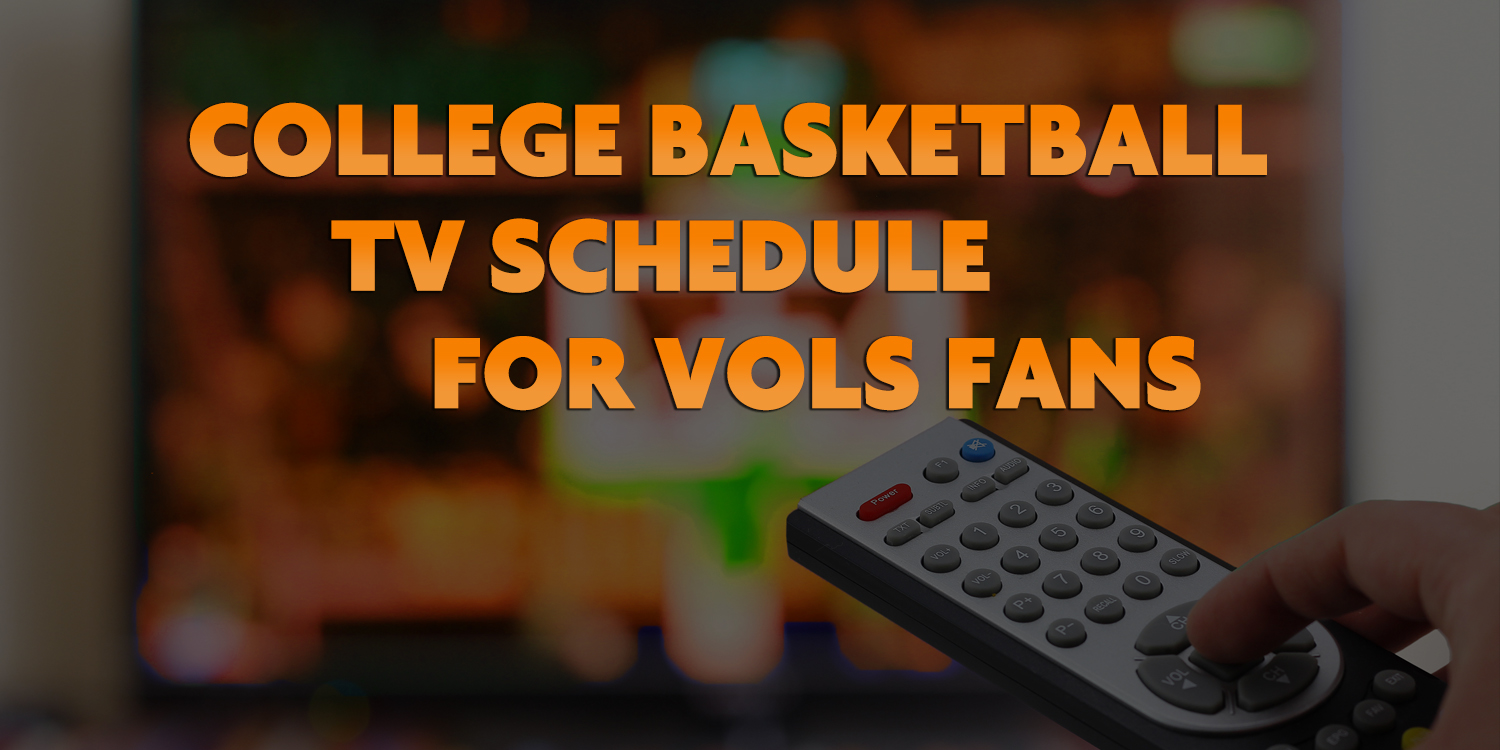If you’ve been following along the last couple of weeks, you know that we’ve been looking closely at the line of scrimmage, particularly from a size perspective. Two weeks ago, we spent most of our time trying to determine if Tennessee had the right size guys along the defensive front, and Wednesday we looked at offensive line continuity. Today, we’ll look at the size of Tennessee’s offensive line.
The cumulative weight of the Vols’ offensive line in 2017
Because of the aforementioned continuity problems, identifying Tennessee’s “starting lineup for the 2017 season” is problematic. As noted in that post, there were 11 different starters at the five positions that year, and four of the five positions were manned by three different starters during the course of the season. The last one wasn’t better, but worse, with six different guys showing up in the start chart at left guard that fall.
With all of that in mind, here’s what we came up with as the 2017 offensive line starters and their weights:
| Position | Player | Wt. 1 | Wt. 2 | Wt. 3 | Average Wt. |
| LT | Drew Richmond | 309 | 309 | ||
| LG | Jashon Robertson | 300 | 300 | ||
| C | Coleman Thomas | 309 | 309 | ||
| RG | Trey Smith | 320 | 320 | ||
| RT | B. Kendrick/D. Brooks/M. Tatum | 318 | 282 | 281 | 294 |
| Total | 1532 |
That looks like a pretty hefty offensive line, especially when Kendrick was in at right tackle. How did it compare to last fall?
The cumulative weight of the Vols’ offensive line in 2018
There was better continuity last fall, but the heft took a hit, primarily at the guard positions:
| Position | Player | Wt. 1 | Wt. 2 | Average Wt. |
| LT | Trey Smith/Marcus Tatum | 320 | 293 | 307 |
| LG | Jahmir Johnson | 285 | 285 | |
| C | Ryan Johnson | 302 | 302 | |
| RG | Nathan Niehaus/Jerome Carvin | 287 | 303 | 295 |
| RT | Drew Richmond | 316 | 316 | |
| Total | 1505 |
With Jahmir Johnson and Nathan Niehaus both well under 300 pounds, it looks like size could have been a fairly significant factor in the lack of improvement along the line in Pruitt’s first season.
The projected cumulative weight of the Vols’ offensive line in 2019
The good news is that the line is almost certain to get bigger again this fall and, if things play out the right way, it could get A LOT bigger.
Here’s our best guess at the starting lineup for 2019:
| Position | Player | Wt. |
| LT | Wanya Morris | 309 |
| LG | Ryan Johnson | 313 |
| C | Brandon Kennedy | 300 |
| RG | Jerome Carvin | 305 |
| RT | Marcus Tatum | 308 |
| Total | 1535 |
First things first: Everybody there is over 300 pounds, so woo for that.
That lineup is based on several assumptions, though. The first is that Brandon Kennedy will re-win the starting position at center and that Johnson — who started 11 games at the position last year — will slide over to guard. That displaces Jahmir Johnson, who started 11 games at left guard in 2018, but I’m moving him out because he’s currently listed at only 270 pounds on the official roster. He may be good, and he may be experienced, but if he’s only 270, I don’t think he makes the cut on a line with more options this year. 247Sports says that Johnson is now up to 297 pounds, but all of the official information is showing that he’s actually lost weight from last season, not gained it. If he is approaching 300, though, then I think he stays in the mix with several other guys.
Other assumptions are (1) that Wanya Morris does indeed win the job at left tackle, for which he was obviously being groomed this spring, (2) that Trey Smith’s health issues will keep him off the field, which is a real shame, and (3) that Darnell Wright not enrolling early means he won’t be able to displace some of the guys who not only got experience last year but also gained weight this offseason.
But now let’s see what happens if we make some different assumptions:
| Position | Player | Wt. |
| LT | Wanya Morris | 309 |
| LG | Ryan Johnson | 313 |
| C | Brandon Kennedy | 300 |
| RG | Trey Smith | 337 |
| RT | Darnell Wright | 320 |
| Total | 1579 |
If Smith is able to play, he’ll likely start, and if Wright lives up to his billing and can get out of the gate quickly, he may be able to relegate several of last year’s starters to the two-deep. If both of those things happen, Tennessee has a 1,579-pound offensive line staffed by big dudes from end to end.
Is that good?
But how does a 1,535-pound (or a 1,579-pound) line compare to Tennessee’s main rivals? We’ll look at that next.



